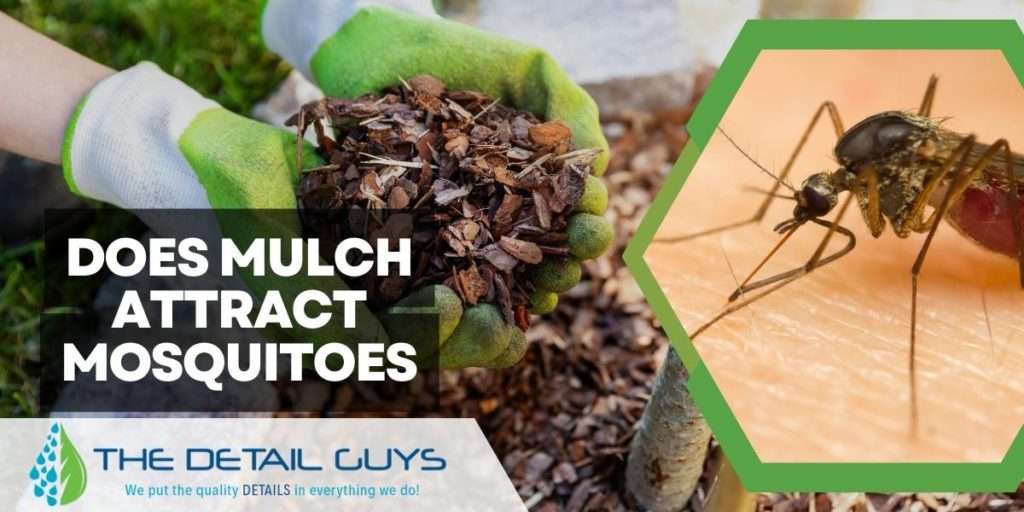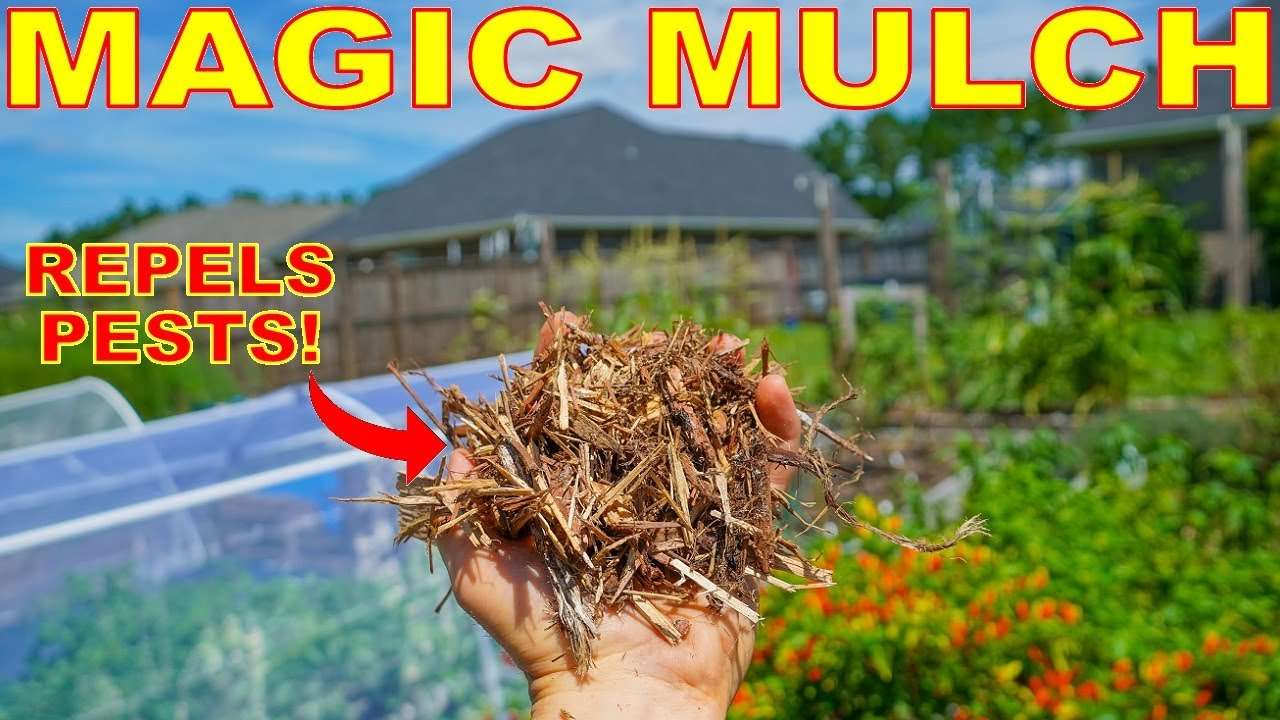Mulch is a great addition to any garden as it provides numerous benefits for plants, helping to conserve moisture, suppress weeds, and regulate soil temperature. However, it’s not all sunshine and roses when it comes to mulch, as it is also a magnet for bugs. Bugs are drawn to the organic nature of mulch, finding protection and high humidity within its layers. While this may seem like a nuisance, there are ways to mitigate the issue. Insecticides, as well as allowing the mulch to dry out, can help eliminate bugs. Additionally, different types of mulch attract different bugs, so it’s important to choose wisely. Addressing the source of the problem, such as removing organic matter or dead creatures from the mulch, can also help eliminate pesky insects. By regularly disturbing the mulch, introducing beneficial insects, and keeping the area clean, you can prevent bug infestations and ensure your plants thrive.
Different bugs attracted to different types of mulch
Mulch is beneficial for plants as it helps retain moisture, suppresses weeds, and regulates soil temperature. However, it’s important to note that mulch also attracts bugs. Bugs are typically attracted to organic mulches that provide protection and high humidity, making them an ideal habitat for pests.
Different bugs are attracted to different types of mulch. For example, ants are commonly attracted to wood chip mulch, while termites are drawn to mulch made from wood products. Roaches tend to infest compost mulch, and flies are often found around mulch that contains decaying organic matter. Spiders can be attracted to any type of mulch, but they are particularly drawn to moist and shaded areas. Yellowjackets are commonly found in bark mulch, and bees may be attracted to colored or scented mulches. Mosquitoes and ticks are insect pests that can be found in various types of mulch, especially if there is standing water nearby.
Eliminating bugs attracted to mulch
If you have noticed bugs infesting your mulch, there are several methods you can use to eliminate them. Insecticides can be an effective solution for bug elimination. However, it’s important to choose insecticides that are specifically designed for the type of bug you are dealing with. Different bugs require different insecticides to effectively eliminate them.
Another method to eliminate bugs attracted to mulch is to remove organic matter and dead creatures from the area. Bugs are often drawn to mulch because it provides a source of food and shelter. By removing any decaying organic matter or dead creatures, you can reduce the attractiveness of the mulch to bugs. Regularly inspect the mulch and remove any debris or dead insects that you come across.

Specific bugs and their elimination methods
Eliminating ants
If ants have infested your mulch, one method for elimination is to place ant hills on top of each other. This disrupts their colonies and can help reduce their numbers. Additionally, you can apply ant bait or sprinkle diatomaceous earth around the mulch area to deter ants from returning.
Eliminating termites
To eliminate termites attracted to your mulch, it is important to remove their food source. If you have wood chip mulch, consider replacing it with hay, grass, or straw mulch, as termites are less likely to be attracted to these materials. Additionally, you can apply a termite treatment to the soil surrounding the mulch to further deter them.
Eliminating roaches
Compost mulch can be a breeding ground for roaches. To eliminate roaches, remove the compost and replace it with grass mulch. This creates an environment that is less conducive to roach infestations. Additionally, sealing any cracks or crevices around your home can help prevent roaches from entering in the first place.
Eliminating flies
Flies are attracted to mulch that contains decaying organic matter. To eliminate flies, remove the compost from the mulch area and discard it properly. You can also use fly insecticide to further deter flies from returning. Additionally, keeping garbage cans tightly sealed and cleaning up any spills or food debris can help reduce the presence of flies.
Eliminating spiders
Spiders can be attracted to any type of mulch, particularly if it provides a moist and shaded environment. To eliminate spiders, you can use spider insecticide or simply remove the top layer of mulch to let sunlight in. Spiders prefer dark and undisturbed areas, so regularly disturbing the mulch can help discourage them from nesting.
Eliminating yellowjackets
Yellowjackets are commonly found in bark mulch. To eliminate yellowjackets, use a wasp insecticide specifically designed for their control. Additionally, removing dead creatures from the mulch area can help reduce their attraction to yellowjackets.
Contacting a beekeeper to remove bees
Bees are an important part of the ecosystem and should be handled with care. If you have a bee infestation in your mulch, it is best to contact a local beekeeper who can safely remove and relocate the bees. Attempting to eliminate bees on your own can be dangerous and harmful to the environment.
Eliminating mosquitoes
Mosquitoes can be a nuisance and a health concern. To eliminate mosquitoes attracted to mulch, remove the mulch and allow the soil to dry out. Once the soil has dried, create a new layer of mulch using a thinner layer than before. This helps create a less favorable environment for mosquitoes to breed.
Eliminating ticks
Ticks are known carriers of diseases and can be found in various types of mulch. To eliminate ticks, you can use tick repellent or tick insecticide on yourself and your pets when in the mulch area. Additionally, regularly inspecting yourself and your pets for ticks and promptly removing any that are found can help prevent tick infestations.
Prevention and maintenance to avoid bug infestations
Prevention is key when it comes to avoiding bug infestations in your mulch. Regularly disturbing the mulch can help prevent bugs from establishing nests and colonies. This can be done by raking or turning the mulch periodically.
Introducing beneficial insects to your garden can also help control pest populations. Ladybugs, lacewings, and praying mantises are examples of beneficial insects that feed on garden pests. You can attract these insects by planting flowers that provide them with nectar and pollen, as well as by providing shelter such as insect hotels or small piles of rocks.
Keeping the area clean is another important aspect of bug prevention. Remove any debris or decaying organic matter from the mulch area. This reduces the attractiveness of the area to bugs and minimizes the risk of infestations.

The decomposition of mulch and soil enrichment
Mulch does not go bad, but it may break down over time due to exposure to weather conditions and microbial activity. As mulch breaks down, it gradually releases nutrients into the soil, enriching it and improving its fertility. This decomposition process is beneficial for plant growth.
To maintain the benefits of mulch, it is important to replenish it when needed. As the mulch layer becomes thin or starts to decompose, add a new layer of mulch to ensure the soil is adequately covered. This helps regulate soil temperature, retain moisture, and suppress weed growth.
Benefits of organic mulches
Organic mulches, such as straw, wood chips, and leaf litter, offer various benefits for both plants and insects. These organic mulches attract beneficial insects, which are natural predators of garden pests. Ladybugs, ground beetles, and parasitic wasps are examples of beneficial insects that can help control pest populations.
Moreover, organic mulches provide a habitat for beneficial insects to shelter and reproduce. The high levels of organic matter in these mulches create a favorable environment for these insects, improving overall garden health.

Using shredded cardboard as mulch
Shredded cardboard can be a suitable alternative to traditional organic mulches. It provides similar benefits, such as regulating soil temperature, retaining moisture, and suppressing weeds. However, there are precautions to consider when using shredded cardboard as mulch.
Glossy or printed cardboard should be removed before using it as mulch. The chemicals and inks used in the printing process may contain toxins that can be harmful to plants and insects. It’s best to use plain, unprinted cardboard for mulching purposes.
In conclusion, while mulch is beneficial for plants, it can attract bugs. Different bugs are attracted to different types of mulch. To eliminate bug infestations, insecticides can be used, and removing organic matter and dead creatures can help address the source of the problem. Prevention and maintenance, such as regularly disturbing the mulch, introducing beneficial insects, and keeping the area clean, can help avoid bug infestations. Mulch decomposition enriches the soil, and organic mulches attract beneficial insects. Shredded cardboard can be used as mulch, but precautions should be taken to avoid using glossy or printed cardboard. By following these guidelines, you can enjoy the benefits of mulch while minimizing bug infestations.




